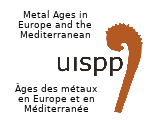Veliki Novgorod is an important historical town that is listed as an UNESCO site and was a capital of ancient Russia. The Institute of Archaeology of the Russian Academy of Sciences of Moscow has been carrying out excavations in the town for 22 years, and in the last 9 years many tens of thousands of fresco fragments were brought to light in the area of the St. George's Cathedral. The excavations conducted by the team of the Institute showed that there were different phases and that the frescoes of the 12th century had been knocked down and left under the floor of the Cathedral of St. George and in other places in the area of the Yuriev Princely Monastery (built in 1119). There were also later renovations, with a major one carried out in 1825–1827.
Our analyses have clearly shown the differences between the early frescoes and those carried out later, and these details will be discussed in the paper. Further, we also classified the pigments employed for the frescoes: these were mainly very “classical” earths but also very expensive pigments such as lazurite and cinnabar. Finally, our studies explored the substrates of the frescoes and could determine some peculiarities of the very complex preparation layers of the Russian-Byzantine paintings. For the first screening, the analytical data were collected using a portable XRF (pXRF). In this way we could roughly distinguish the pigments and the mixtures employed to obtain different nuances of color. As a second stage we analyzed a large number of samples by scanning electron microscopy with energy dispersive spectrometry (SEM-EDS), and this allowed us to determine the nature of the pigments, a secco layers and how they were applied, and the nature of the substrate layers.
This is a project of the Institute of Archaeology Russian Academy of Sciences, Laboratory of Architectural Archaeology and Interdisciplinary Study of Architectural Monuments. The research was carried out within the state assignment of the Ministry of Science and Higher Education of the Russian Federation (theme «Pre-Mongol frescoes in Novgorod: archaeological context and scientific research: The frescoes of St. George's Cathedral, Yuriev monastery from the 2013/2020 excavations»), agreement № 075-15-2021-576.

 PDF version
PDF version
